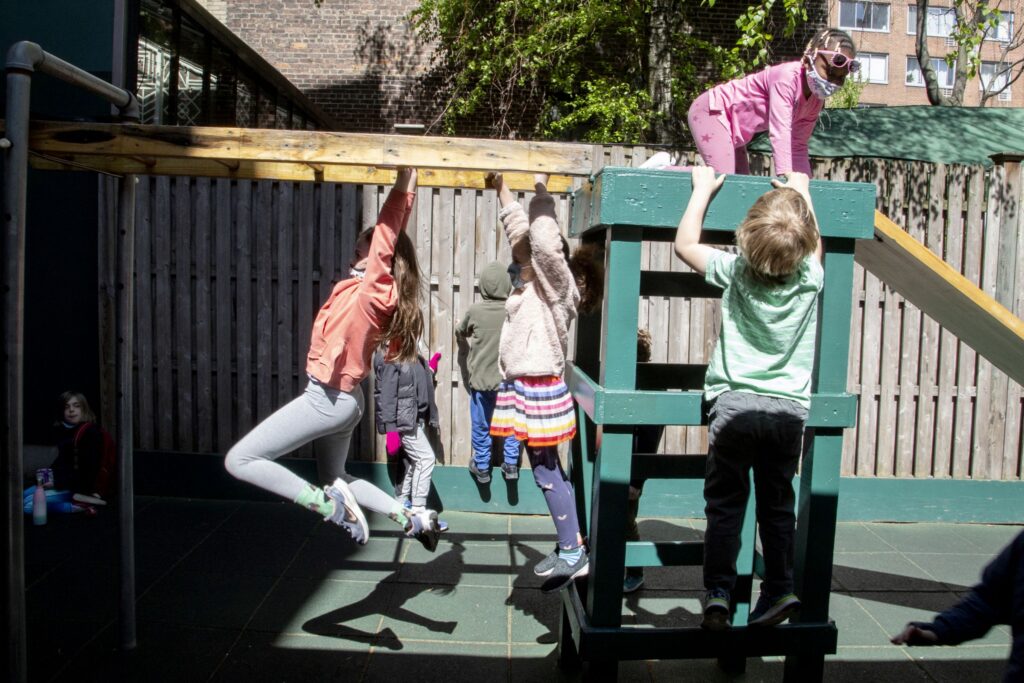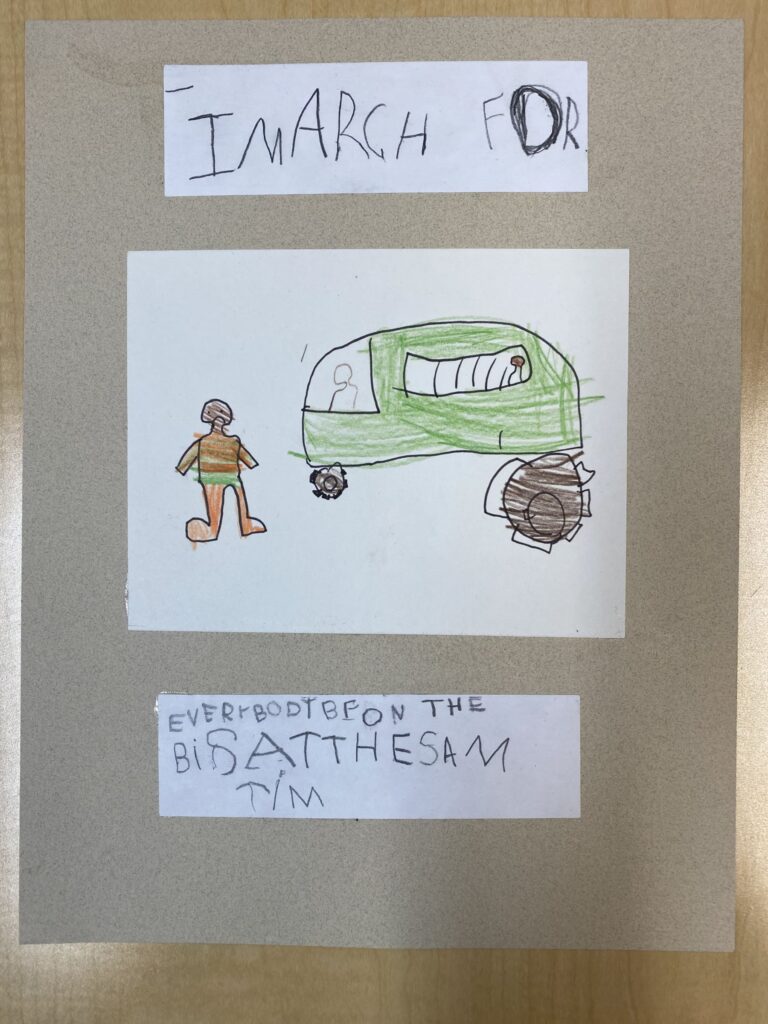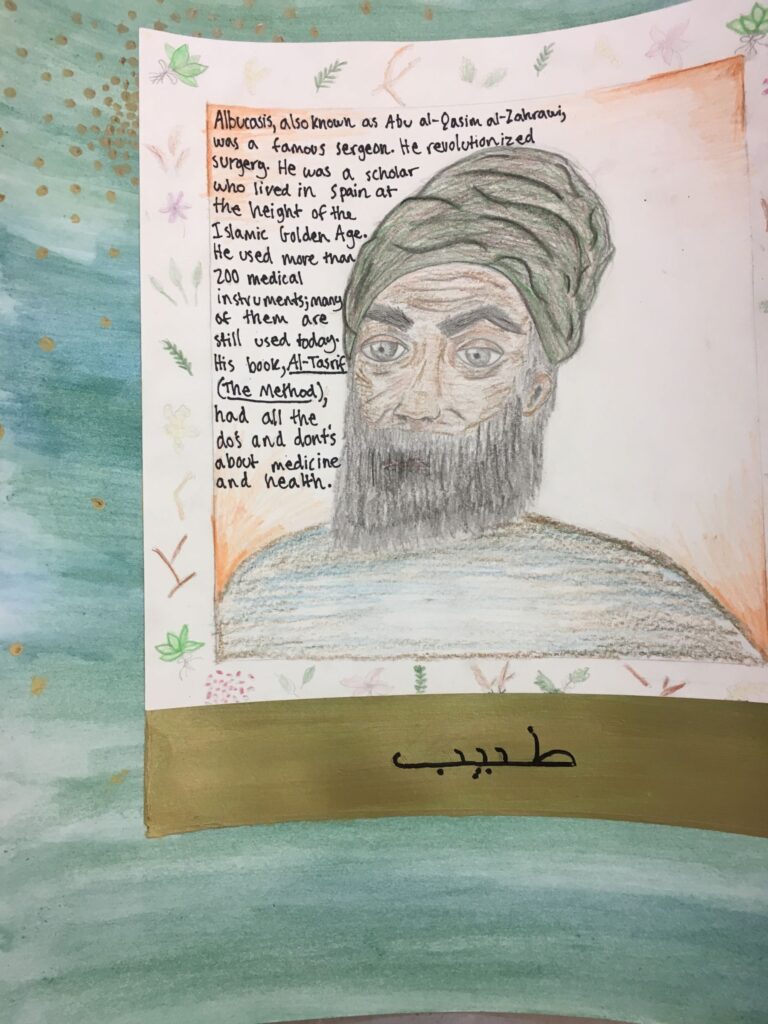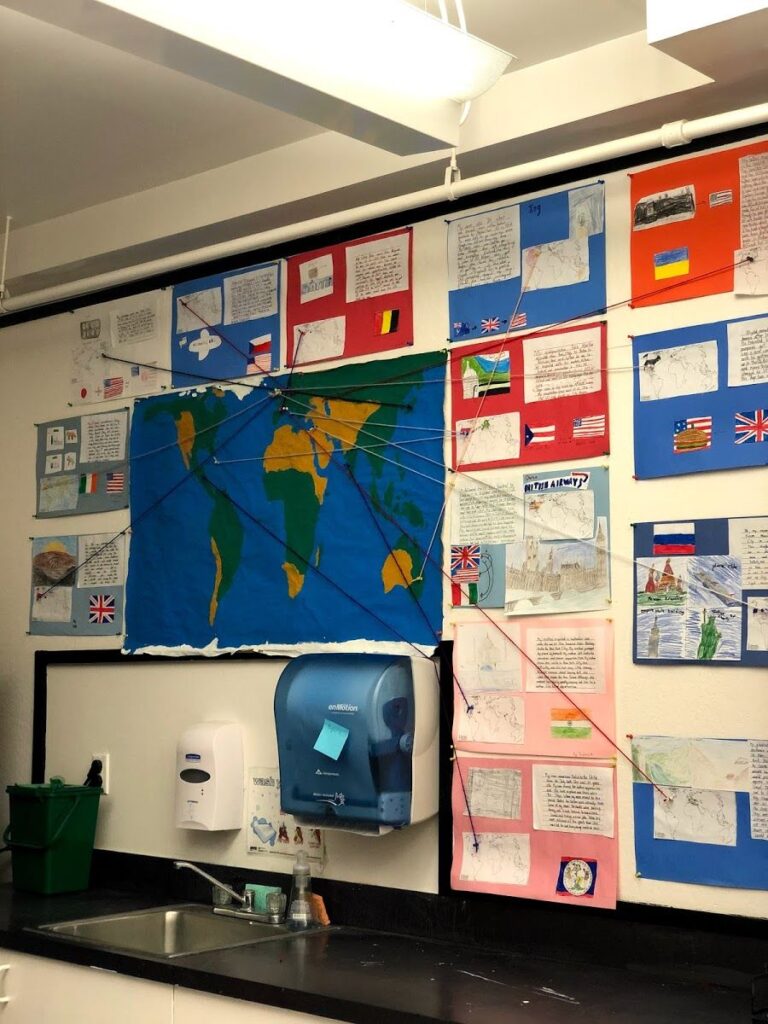Everyone’s Work: Anti-racism Comes into Focus at C&C
7/13/2021
By: Millie Cartagena, Director of Community Life, Equity, and Inclusion

My first vivid encounter with racism was when I was looking for an apartment at the age of 21. After spending hours on the phone negotiating and landing on a rental price with the owner, I arrived at the location and was told it was no longer available. Before that, as an Afro-Latina living in a tight-knit Latinx community, I was mostly spared.
Systemic racism and white privilege, though I didn’t powerfully experience either until later in my life, have always been there. In the past year, the COVID-19 pandemic has highlighted the structural racism that America was built on, visible in everything from racially motivated violence to the disproportionate economic impacts and limited access to healthcare seen in communities of color. At the same time that the pandemic has been going on, a reckoning of racial justice has taken place in our country. None of us can any longer say that inequities and racial injustice do not exist.
City and Country School has been engaged in Diversity, Equity, and Inclusion (DEI) work for the last three decades, through affinity groups; guest speakers for faculty, staff, and parents; Diversity Group events and book groups; and many other platforms and discussions. Despite the additional burden our community took on as it learned to function virtually in 2020, it was important for us not only to move forward with anti-racism work, but to dig in even deeper. So, in addition to ongoing events, Board-level equity work, and teacher-led social justice strands in the curriculum (see the article “Social Justice Integration” from Works in Progress Issue One), C&C was committed to examining its own history of racism and the harm brought upon Black, Indigenous, and People of Color (BIPOC) community members.
Last summer, we held a series of online forums for different groups in our community—BIPOC students (XIs–XIIIs), alumni, current and former parents, and current and former faculty and staff. We asked these community members to reflect upon and share how race shaped their experiences at C&C, eliciting responses that depicted the ways the School has perpetuated racism within our community. Although it was a painful process for our community members to relive these experiences, their openness was a gift to the school.
The stories they shared helped frame our anti-racism work and led to the guiding question, “What would disrupting racism at C&C look like?” Following those summer meetings, we hosted monthly Anti-racist Forums throughout this year as courageous spaces to continue the work of cultivating racial equality and justice at our school.
This is not easy work. I find that people struggle, especially with understanding that self-reflection is part of anti-racism work. When you have a forum that is inclusive of folks from different constituencies, races, and ages, you will find that people are at different places in their individual journeys. We have to remind ourselves constantly that anti-racism work gets messy, and people will make mistakes. Being uncomfortable is part of the process, but I have seen a great growth within the community and deep appreciation from the participants.
Creating a school-wide learning environment where everyone is seen, validated, and affirmed is essential. Building community and helping students develop empathy and appreciation of differences is imperative to creating a world where everyone can live and share their truth. Our anti-racism work can be found within the classroom, in strands integrated into curriculum.
C&C is a Social Studies-based institution, and connecting past social justice issues and movements to the present is a way to show students that they can interrupt systemic racism and be part of creating the social change that is needed. Teachers allow students to develop their own identities and perspectives, and they expose them to different points of view. They support students in developing a love for learning, becoming critical thinkers, and forming their own opinions. The following paragraphs contain glimpses into three classrooms—the VsM, XIsJ, and IXsM. In each, the Group Teacher highlights some of the many ways that children undertake this work at school.
Anti-racism work isn’t easy, but as we face challenging moments together as a school, I remember the words of my grandmother: “Para adelante con fuerza y fe,” (Onward with strength and faith).
Social Justice Through Curriculum and Community in the Vs
By Mona De Victoria, VsM Group Teacher

The Vs is a really exciting age developmentally for children to be able to engage in identity work and to think critically about the community and the world around them. If given ownership over their work, Vs are able to build true empathy and make connections (both personal and otherwise) that are very powerful.
Books provide windows and mirrors, create a context for identity work, and explore topics of social justice. I am mindful about providing a bookshelf that is diverse in many ways, and I work hard to seek out #OwnVoices texts, in which the author of the story shares an identity of one or more main characters. I also avoid reductionist or surface diversity texts.
Books are most powerful when used within the context of a Study or an experience. We read a book called Why Am I Me? which led the Vs to create self-portraits. Vs can answer the questions, “What can you learn about me by looking at me? What can’t you know about me from looking at me?” Allowing a child to own the process of determining what is different about themselves and another child—and what is the same—is so important.
There are some branches of social justice work that always come up at C&C because of our extensive community outreach. This allows us to explore questions such as, “Why do you think everyone is bringing food into school for a food drive?” However, as C&C’s curriculum is formed by what children are experiencing and questioning, it’s important for me, as their teacher, to be mindful of and prepared for any opportunities that come up organically. For example, in 2019, many Vs attended the People’s Climate March and were familiar with the Women’s March. The Vs decided to create a march in the block area of our Room, even painting a sidewalk where the march would take place. We had discussions and read books about those who fought for change, and then we asked Vs what they would march for, which turned into a Group book, What the VsM March for.
Similarly, their interest in the World Cup led to a flag Study, during which they researched and learned about flags and their symbolism. I read them a book about how the rainbow flag came to be, and the Vs were introduced to Harvey Milk—a civil and human rights leader and one of the first openly gay elected officials in the U.S. Naturally, the Vs began to make their own flags and explain the meanings, many of which had themes of inclusion and equality.
In the lead-up to the 2020 presidential election, we asked, “What can you do to make the world a better place?” We talked about women’s education activist and Nobel laureate Malala Yousafzai, environmental activist Greta Thunberg, and the ability that children have to make change.
Ultimately, social justice strands are always running through our curriculum, our community, and the lives of the children in our Groups. I am glad to be part of a school that emphasizes the importance of having conversations about social justice, freedom, racism, and equity—and one which supports me as I guide the Vs.
Questioning Hierarchy and Developing Systemic Awareness in the XIs
By Daniela Jimenez Gabb, XIsD Group Teacher

As with everything at C&C, we start by meeting our students where they are. Developmentally, XIs begin to turn inward as budding adolescents just as they are gaining the ability to turn outward and look critically at the world, leading them to question authority and speak up when something’s unfair or unjust. Explorations of social justice, diversity, equity, and inclusion are a natural extension of that questioning. As an educator, I am always looking for ways to enter into such topics through curriculum, and also for how to make room for conversations outside of curriculum.
We use the content of the fall (Medieval Islamic World) to dispel the Eurocentric view of the Renaissance.
The roots of the Renaissance can be found in Asia, and I place an emphasis on the cross-cultural, cross-continental exchanges that were taking place. Finally, we use the Study to interrogate relationships of power present in 1,001 Arabian Nights (and note how they echo similar dynamics we see today regarding wealth and gender).
Once we get to Venice during the late Middle Ages and early modern era (known as the Renaissance in European history), we talk about religious diversity through the lens of the Jewish community in Venice and the persecution of those who were different and who challenged the status quo authority during the Inquisition. We unpack dynamics of power with a continued focus on gender and, more pointedly, class. We dissect the three tiers of social class that existed in Venice during that time, using a primary source: a list of jobs and wages from the 15th century. I give each XI a job from that list in order to bring class disparities to life, and I ask them to reflect on where these inequities still exist today. As last year’s XIs began to connect history with current day, they even ended up asking “What’s the hierarchy at C&C?”
Current events also enter the classroom. I follow the children’s lead as they react to the world around them in real time. Community Meetings—open-ended discussions on topics brought forth by the XIs—have led to self-selected conversations about race, racial violence, and policing. A number of students who attended protests raised questions about police shootings. As often happens with XIs, they were so eager to understand that they were often 10 steps ahead. As their teacher, I had them step back and look at what “race” even is and when the concept began to take shape historically. This started with the fundamental question of, “What is a social construct?” Once properly focused, more questions were raised: “If race is a construct, then can it be done away with? What are the connections between slavery and the history of policing in this country?”
Carving out time and space for these conversations remains a goal as we follow the children’s lead and
make choices around how and when to support them in a critical examination of their world.
Adding More Diverse Perspectives to the IXs Study of Westward Migrations
By Megan Holland, IXsM Group Teacher

Each year, the IXs’ Study of American migration stories, with a focus on the Oregon Trail and Lewis and Clark, was a thrilling look at life on the frontier and the movement of people. Katie Mastriano (IXsK Group Teacher) and I enjoyed teaching about these migrations and journeys, and the ways that people worked with resources available to them as they started a new life and built a new society. However, we thought the curriculum could be richer and more accurate if we were able to focus on more diverse perspectives. In many ways, we felt limited by the Oregon Trail curriculum.
We spent time in C&C’s Archives to learn how previous C&C teachers had changed their Studies. Inspired, we worked with Joan Brodsky Schur (Social Studies Consultant) to explore other moments in American History for the IXs’ Study. After meeting with Ayesha Long (Director of Middle School) and Millie Cartagena (Director of Community Life, Equity, and Inclusion), we settled on an earlier migration: the movement into the Ohio Territory after the end of the Revolutionary War in 1783.
Slavery was banned in the Ohio Territory, meaning not only can we examine the institution of slavery, but we can also learn how African Americans built new lives for themselves—and we found fantastic primary sources about African American settlement of the territory. We study the Indian Confederacy of tribes who resisted westward expansion as well, and this has allowed us to include literature by Indigenous writers in the Study, such as Louise Erdrich’s Birchbark series.
The previous Study’s sense of industry and hard work—developmentally appropriate for nine-year-olds—is still present. We found primary sources from this time period from Hudson Bay Company—records of trades that actually happened at fur trading outposts—that have been inspiring for the School Store.
The Play depicting westward expansion also remains, though now we can grow from more complicated conversations about how to embody diverse characters with accuracy, sensitivity, and respect. Developmentally, IXs are just coming into being able to show the kind of empathy needed to take on different perspectives.
In the 2019–2020 school year, the Play featured one African American family and one white family going to Ohio Territory and a mixed family—Native American/French—who was already there. It was fascinating to witness the children talk and come to a decision about what they should do when the settlers arrived. Many of them wanted to coexist, others wanted to move farther west, and one member of the mixed family wanted to take a stance against the families moving in—sneaking out in the night and joining the resistance effort.
One student, who played a white character, felt uncomfortable. She wrote in her journal, “If I were a person in this time period, I’d be racist and ignorant of these people on this journey,” so we had a conversation about it. We decided that we did not want to act out racism on our peers, since it would be hurtful. We knew we could simultaneously understand that this was the reality and choose not to subject each other to that kind of treatment during the role-play we were doing.
This sort of reflection in the present time is exactly why Katie and I wanted to change the IXs’ Study of the past. It has also allowed us to look at the contemporary environmental movement and the relationship between the US Government and Indigenous people, and to enrich our Geography Study while contemplating shifting borders—among many other things. It has been an energizing experience, and one that will continue to evolve in the coming years.
Click here to read the full article, including images and interactive links, in Issue IV of our magazine, Works in Progress.
